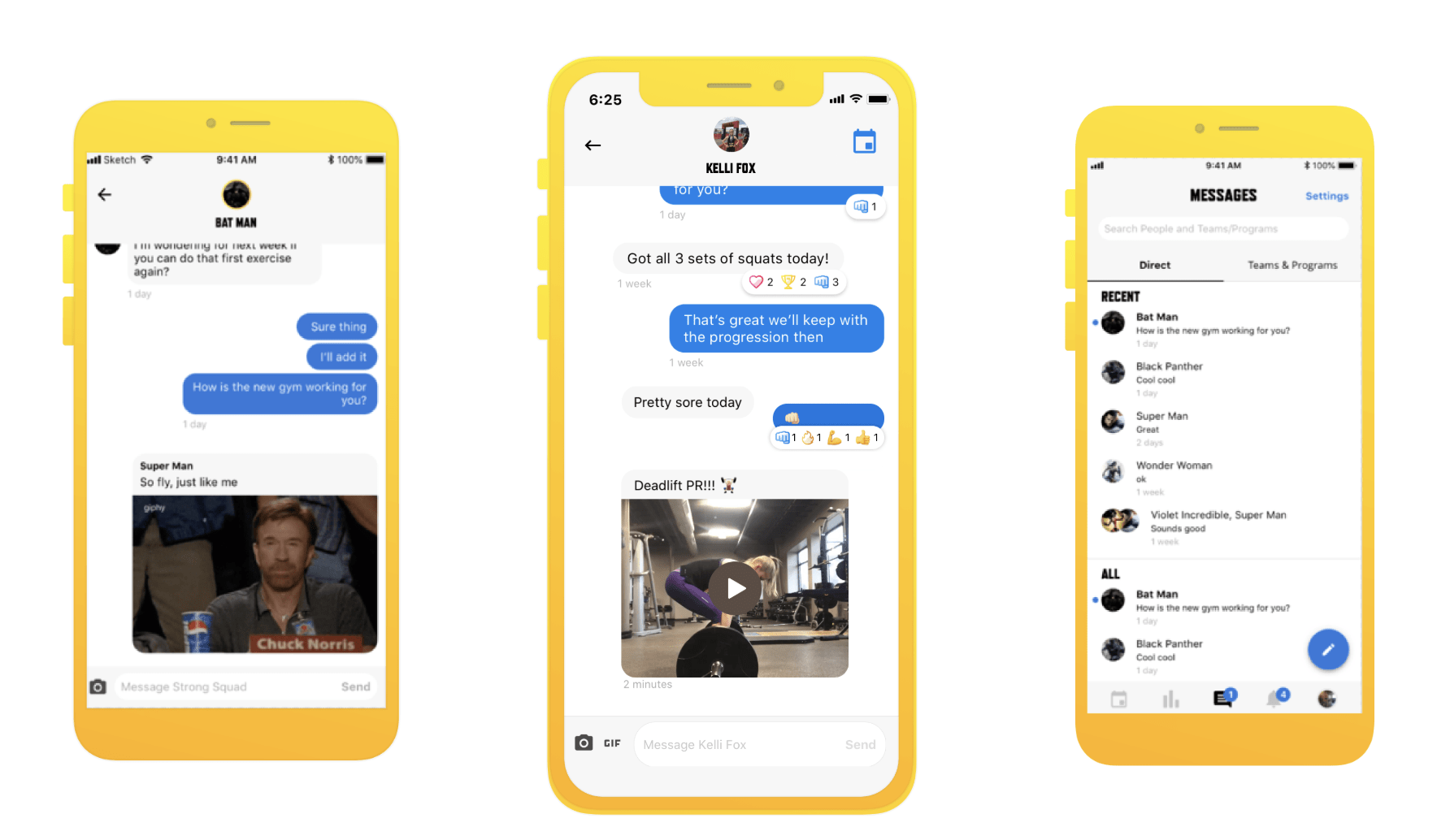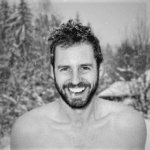What is the Key to Human Mental Resilience?
MindsetAccomplishing any goal in training takes physical and mental resilience. It’s easy to back down from an uncomfortable situation because we aren’t prepared to create a space between when we feel something and when we react to it. This limits our ability to push our boundaries and grow.
We can either react very quickly to something without much thought, or we can take space and insert choice or agency to give ourselves an ability to control our reactions and our biology.
Scott Carney
Investigative journalist and anthropologist Scott Carney has worked in some of the most dangerous and unlikely corners of the world. His work blends narrative non-fiction with ethnography. What Doesn’t Kill Us was a New York Times bestseller; other works include The Red Market and A Death on Diamond Mountain and The Wedge. Carney was a contributing editor at Wired for five years and his writing also appears in Mother Jones, Men’s Journal, Playboy, Foreign Policy, Discover, Outside and Fast Company. His work has been the subject of a variety of radio and television programs, including on NPR and National Geographic TV.
// Scott Carney Shares the Secrets from His New Book The Wedge
As a roving reporter cutting his teeth on overseas assignments, Scott Carney lived as cheaply as possible so he could “focus on writing stories that matter.” This consistent dedication to his craft is evident not only in his anthropology-focused journalism but also his authorship, from his first book The Red Market to his 2017 New York Times bestseller What Doesn’t Kill Us.
Continuing where the latter left off, his latest book, The Wedge, explores the frontiers of human performance, with Carney’s trademark blend of solid scientific research, insightful interviews with experts you might not have heard of but need to know, and refreshingly candid participatory journalism that George Plimpton himself would be proud of.
In the first installment of a two-part Q+A, Carney explains the core concept of The Wedge, shares some stress/anxiety management techniques, and explains why you should overcome your aversion to ice baths and saunas.

Could you briefly explain the idea of The Wedge?
The easiest way to think of it is separating stimulus from response.
What sort of mental gymnastics do you get into when you’re trying to create a space between when you feel something and when you react to that feeling?
The wedge exists not only in very stressful environments, such as ice baths and with certain breathing techniques but also in every environment that we inhabit.
We can either react very quickly to something without much thought, or we can take space and insert choice or agency to give ourselves an ability to control our reactions and our biology.
What are practices that anyone can develop to insert that wedge between stimulus and response?
When you really want to get inside your own biology, the easiest techniques are breathwork, the ice bath, and heat training.
These really let you get deep into what your physical personal limits are.
They also allow you to get in touch with your autonomic nervous system to a degree and train yourself to better perform in stressful environments.
In the book you mention using breathwork to control anxiety. How might that apply in a training context?
All of the breathwork techniques that I wrote about can manage anxiety, because when you feel anxious, it’s not just that it’s your mind projecting what the future will be like.
It’s also a feeling in your body – literally a physical sensation.
Breathwork is really good for creating a set of physical relationships and a set of physical sensations that then you can learn to control. That’s why anxiety gets reduced when you start doing the Wim Hof breathing protocols or Brian Mackenzie’s protocols.
You can train your CO2 tolerance, which I also write about in the book. If you get better at working with reduced oxygen intake – which in that moment can be very stressful – you will have a performance boost and lower anxiety when you get back to competition and everyday life.
Going back to cold exposure for a moment, how can people get started with that, given that an ice bath can seem intimidating?
The whole nature of experience is that it’s subjective. Ice water for me might be merely uncomfortable and for another person it’s terrible.
Everyone has to be aware of where their own desires are before they put themselves in a certain situation.
However, I do think that if someone tells me that they would never take a cold shower, that says a lot about how they’re hardwired. That’s their own anxiety coming out. Unless they have a diagnosed condition, and I’m thinking Raynaud’s that’s been diagnosed by a doctor, everyone should be able to take a cold shower.
There’s no one who’s going to die at 40 degrees in the shower. And actually, your water is probably shooting out at 60 degrees. What you’re reacting to is the notion of discomfort. Get in there, expect the discomfort, feel it, and then get better at dealing with it.
What you shouldn’t get into is damage. You don’t want to get to a point when you’re in the cold and push it so hard that you come out and are fighting a core temperature drop for an hour afterward.
What about on the heat side of things? What would be a minimum effective dose there?
Almost everyone can handle a sauna at 140 degrees without too much trouble for 15 minutes.
You would have to be in incredibly bad cardiovascular shape to not be able to do that. When I take a sauna, I start at 180 or 190 degrees and stay in for 30 to 50 minutes. A hot tub obviously couldn’t be at that temperature. If you were in a 140-degree hot tub, you’d die. But because air temperature doesn’t conduct heat quite as much as water, 140 in a dry or infrared sauna is really not all that intense.
In general, you’re supposed to stay in these hot environments until you get to the point where you feel a little claustrophobic. This is your body’s autonomic signal that warns you, “I’m too hot. I should get out.”
You should stop before you feel like you want to run away, when you notice your breathing is a little more strained than normal. Once you’ve felt what that “get out point” is, then in the future you don’t need to go that far. You’ll just know when you’re getting near it. It’s hard to establish a baseline for where that turnoff point is without actually getting close to it.
What are a couple of the main physiological or psychological benefits athletes can get from regular exposure to hot and cold?
Emotional and physical resilience.
I’m more interested in the mental side of it than the physical element.
The wedge is the meeting point between the two, so it certainly has benefits for both. But the wedge is largely a mental technique, because there’s a decision point between stimulus and response. When you’re getting too hot, when you know you’re getting to your edge, and you choose to push it or not.
Once you’re familiar with what your limits are, say in the hot or cold, you can apply that knowledge to your limits at whatever thing it is that you’re working on. Your weight limits, or something like a PR in the high jump in track.
There’s no single piece of magical advice because everyone is different. But once you learn to control yourself in one stressful environment, your ability to tolerate stress in other environments increases.
We only have one autonomic nervous system.
It splits into two pathways: parasympathetic and sympathetic. You’re either in fight or flight or rest and digest mode. What you’re trying to do with hot and cold, breathwork, and other techniques is to increase your self-awareness and ability to influence your biology.
The environment presents passive cues and switches all the time, but you can consciously choose to tell yourself, “No, I’m not going to follow that passive programming. I’m going to stay in a parasympathetic or sympathetic state longer than what my innate reaction is telling me to do.” So while you’re in the cold, you can opt to relax. Or you could choose to do hot yoga and not freak out about feeling the heat.
TAKE YOUR TRAINING
TO THE NEXT LEVEL
The TrainHeroic Marketplace
TrainHeroic brings online training and strength programs to life with an unmatched imersive training experience delivered directly to your phone. Browse our Marketplace for thousands of programs or take your training up a notch by joining an online community with fresh programming and coaching by some of the biggest names in the strength game starting at $15 / month.


READY TO TRY TRAINHEROIC?
Our powerful platform connects coaches and athletes from across the world. Whether you are a coach or trainer looking to provide a better experience for your clients, or you’re an athlete looking for expert programming, click below to get started.
Want more training content?
More coaches and athletes than ever are reading the TrainHeroic blog, and it’s our mission to support them with the best training & coaching content. If you found this article useful, please take a moment to share it on social media, engage with the author, and link to this article on your own blog or any forums you post on.
Be Your Best,
TrainHeroic Content Team
HEROIC SOCIAL
HEROIC SOCIAL
TRAINING LAB
Access the latest articles, reviews, and case studies from the top strength and conditioning minds in the TH Training Lab


